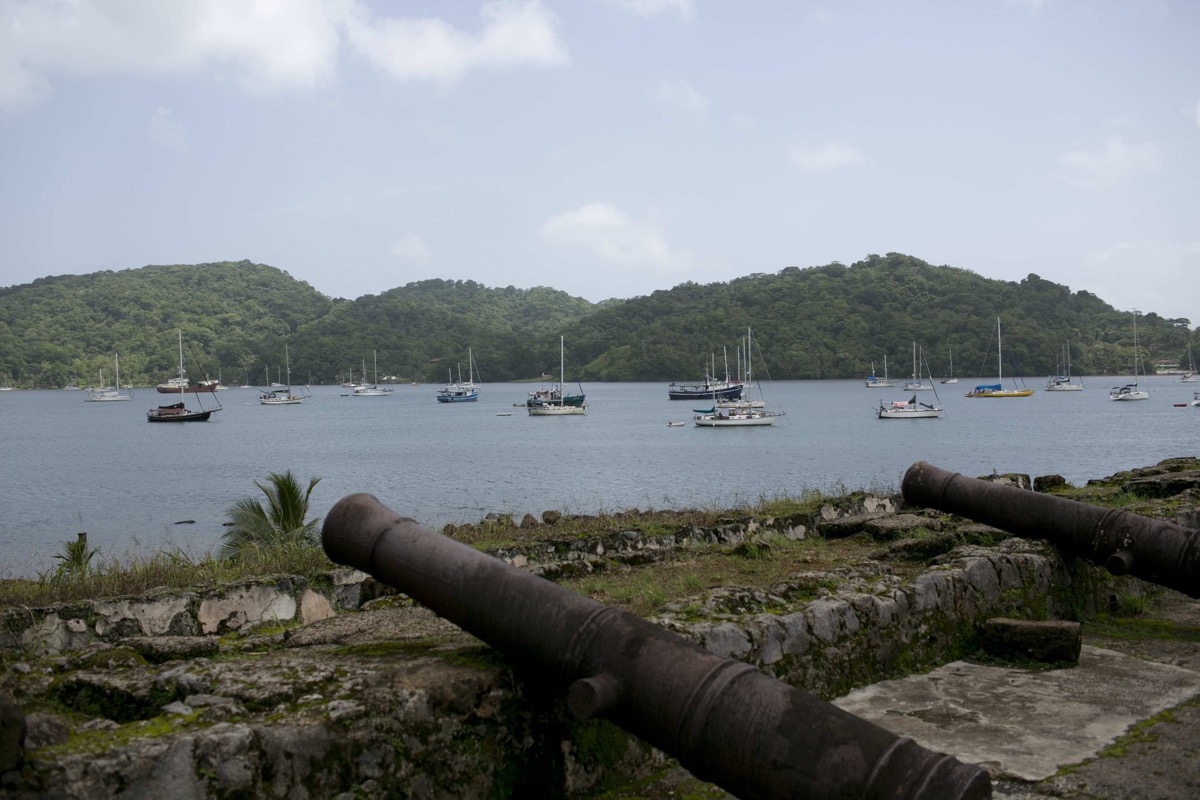Portobelo was founded on March 20, 1597, after Nombre de Dios, the site of Panama’s first Atlantic-coast Spanish settlement, was looted and sacked by the privateer Sir Francis Drake. Two accounts of the relationship between arriving Spaniards and Cimarrones persist in local oral history.[i] In one version, more than six hundred Cimarrones lived in the rainforest of Portobelo when the Spanish settlers arrived. Outnumbered and fearful, the Spanish made a treaty with Cimarrones offering to recognize their freedom with the mandate that they inhabit an area northwest of Portobelo. Accepting the capitulation, the Cimarrones relocated, renamed the area Palenque, and abandoned the name “Cimarron” because they were no longer runaways; they were free Blacks / free Congos. In the other version, the Spanish and Cimarrones reached an accord before relocating to Portobelo. After a sizable number of Cimarrones helped Drake seize and plunder Nombre de Dios, the Spanish entered an agreement with them, recognizing their sovereignty in return for a guarantee that they would no longer collaborate with the pirates or take up arms against their former enslavers (Rodriguez 1979, 144). In this version, both groups relocated to Portobelo around the same time, the Spanish living closer to the shore and the Congos—freed Cimarrones—living higher in the rain forest. In both stories, the Spanish and at least one Cimarron band negotiated a peaceful coexistence in late-sixteenth-century Portobelo. Not included in these accounts are the enslaved Africans that the Spanish brought with them from Nombre de Dios to Portobelo or those who continued to be imported into the area during the seventeenth, eighteenth, and early nineteenth centuries to build the forts, aduana (Customs House), and church as well as to serve as domestics in Spanish households. As early as 1640, when the life-sized wooden El Nazareno / The Black Christ statue arrived in the area, the vast majority of the population were free and enslaved Blacks.[ii]
Throughout the seventeenth century and well into the eighteenth, Portobelo was the nexus of trade in the Spanish colonial world. For one to two months each year, the great Ferias de Portobelo (Portobelo Fairs) attracted traders from throughout the empire. After repeated attacks by English privateers and pirates, the Fairs ceased in 1738 and the already small permanent Spanish population shriveled
With the decline of the Spanish empire in the early 1800s and the mid-century California Gold Rush, which restructured Panamanian trade routes through Colón rather than Portobelo, the town became a ghost of its former self. Emptied of opportunists who exploited its geographic location to benefit the economies of distant homelands, Portobelo retained at least some portion of those residents who had benefited from the protection of its rain forest, learned the contours of its sea, discovered how to farm yucca in the mountains, and read the leaves for prescriptions.
Excerpted from “Introduction,” When the Devil Knocks: The Congo Tradition and the Politics of Blackness in 20th Century Panama, The Ohio State University Press. (January 2015)
Introduction | Contemporary “Lived” View
[i].For more about Cimarron history in Panama, see Rodriguez (1979).
[ii].Although a precise percentage is not provided, Edwin Webster (1973) indicates that free and enslaved Blacks greatly outnumbered the Spanish in Portobelo by the end of the seventeenth century (13). Baptismal records, which may have provided additional clues to the number of enslaved people living in Portobelo during this period, have long since been destroyed by fire and/or the environment. The few records that remain are likely stored in Los Archivos de Indios in Seville, Spain. Although it is outside the scope of this study, future researchers will likely find crucial keys to the Black experience in colonial Portobelo located within those archives.

